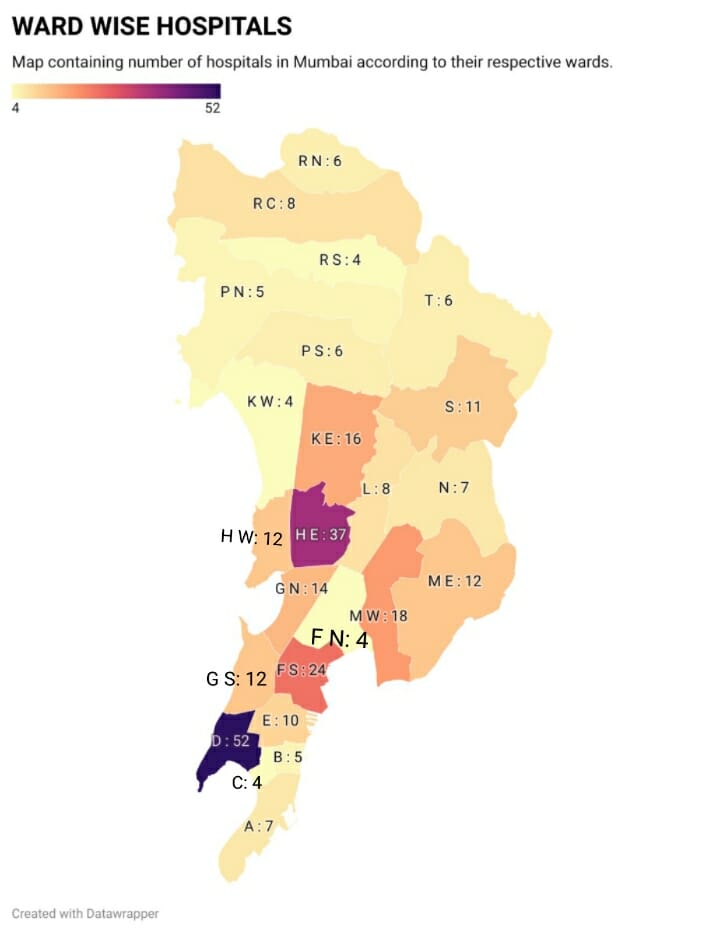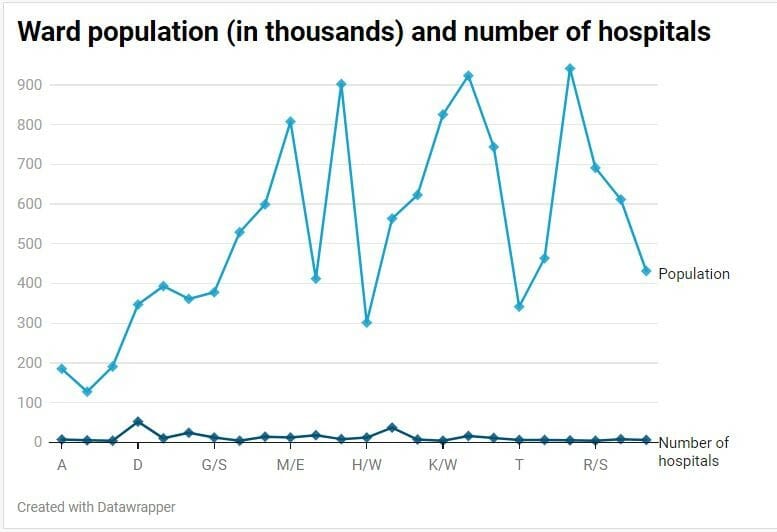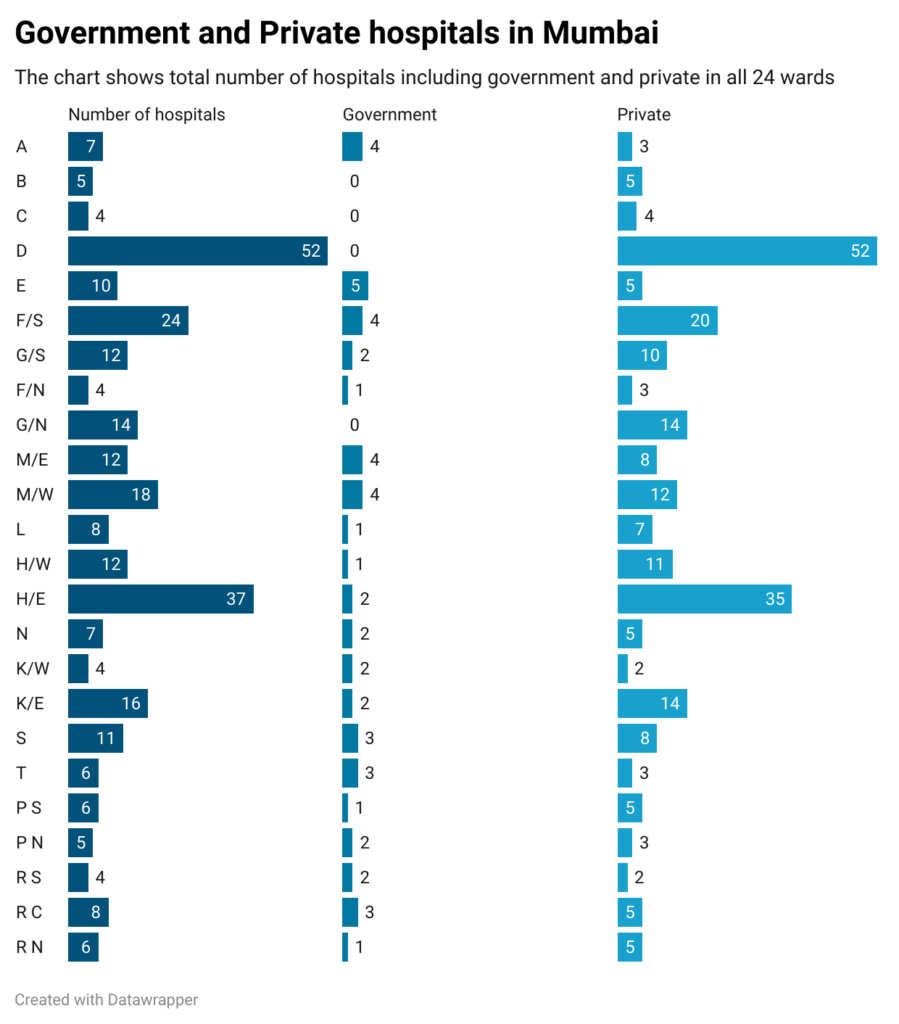Historically, Mumbai developed, progressed and got urbanised from the southern to the northern regions. This evolution encompassed the establishment of essential institutions such as schools, hospitals, government offices, and soon. However, as the cost of living in the southern parts or SOBO (south Bombay) escalated over the years, population settled in northern suburbs, commuting to work in the south.
While this demographic shift might signify growth, it also highlights a challenge: the disparity between basic infrastructure availability and the overall well-being of citizens residing in these areas.
As the urban population expanded northward, the existing amenities such as hospitals, did not always keep pace, leaving communities grappling with an imbalance between essential services and the needs of the citizens.
When it comes to public health, citizens travel considerable distances to the southern parts of the city to access fundamental facilities of government or well-known private hospitals.
The Brihanmumbai Municipal Corporation (BMC) says that it has recognised this issue and is actively engaged in rectifying it. According to officials, efforts are underway to boost infrastructure development across all areas of the city, with a particular focus on the northern regions. The aim is to bridge the gap between various parts of Mumbai, ensuring that citizens can readily access essential services and amenities regardless of their geographical location.
In this article, we have mapped out the hospitals (government and private) for all the 24 wards of the city.
Mumbai’s hospital map
The map shows the entire expanse of Mumbai’s 24 wards, spanning from the southernmost point of Ward A (Colaba) to the northernmost boundary of Ward R/N (Dahisar). Each ward has been labelled and numbered based on the existing count of hospitals within its precincts. This numerical representation offers a clear glimpse into the existing hospital distribution across the city.
The data used in the map is obtained from the official site of the BMC, which also highlights the evident disparities in hospital allocation across the different wards.

Graphic created by Sherine Raj
Read more: Why flawed planning may have a role in annual outbreak of diseases in Mumbai
Ratio of hospitals to population
Mumbai’s population has crossed 20 million and is estimated to double by 2040. One of the most densely populated cities in the world, the city’s infrastructure has been struggling to provide adequate healthcare access for its residents.
The current healthcare landscape in Mumbai reveals a significant disparity in hospital accessibility across various wards. The number of hospitals and available hospital beds falls short of catering to the population density within each ward.

Graph created by Sherine Raj
While the population ranges from 1,20,000 to 9,40,000 in different wards, hospitals remain in single digits, with the exception of D ward. This ward, stands out with an astonishing 52 private hospitals concentrated within its boundaries. This contrasts sharply with other wards, where the count barely reaches four hospitals.
With a history spanning over 150 years, Mumbai has witnessed its infrastructure evolve since the British era. While there is a noticeable discrepancy between healthcare facilities in the northern and southern regions, efforts are being made to bridge this gap, says BMC’s assistant municipal commissioner (health), Dr. Sudhakar Shinde.
“The BMC is committed to enhancing healthcare accessibility for all residents. Several significant projects are in progress. For example, the transformation of Bhagwati Hospital in Borivali. Formerly equipped with only 100 beds, the hospital’s capacity is being expanded to accommodate 500 beds by 2025. Similarly, BMC’s Sangharsh Nagar Hospital in Chandivali is also on track to offer 500 beds soon. These expansions signify a concerted effort to enhance medical care provision,” he says.
Moreover, the emergence of new private hospitals in these areas is set to further improve healthcare services, ensuring that citizens have access to quality medical facilities, added the official. “Through these initiatives, the city is actively addressing the historical disparities in healthcare infrastructure and striving to provide comprehensive medical care to all residents,” he assured.
Need for more government hospitals
A study from IITB indicates that about 35% of Mumbai’s population resides in wards with low hospital accessibility and high social vulnerability. This vulnerability is directly related to the socio-economic factors that influence a community’s ability to withstand diseases.
The research also highlights inadequate healthcare access in the city’s eastern part and highlights poorer access to public healthcare facilities for slum residents. The presence of government hospitals in close proximity especially for low-income groups is the need of the hour.
The chart shows that the majority of the hospitals in Mumbai are private-run and the highest number of government hospitals is in the southern wards.

Chart created by Sherine Raj
“Mumbai’s medical facilities are highly sought after, but we must continue to improve and set high standards to ensure citizens have access to the best healthcare in the city,” added the civic official, Dr. Sudhakar.
Pandemic only highlighted the glaring gaps in the public health system. Since then the costs of accessing private medical care have been only rising. The civic body, and the government at large, needs to not just provide more, but also provide soon.